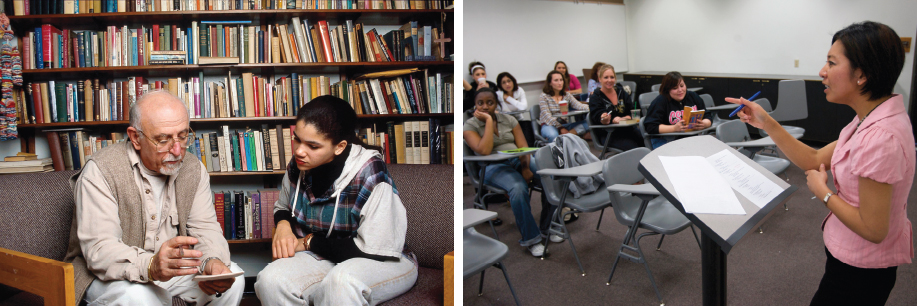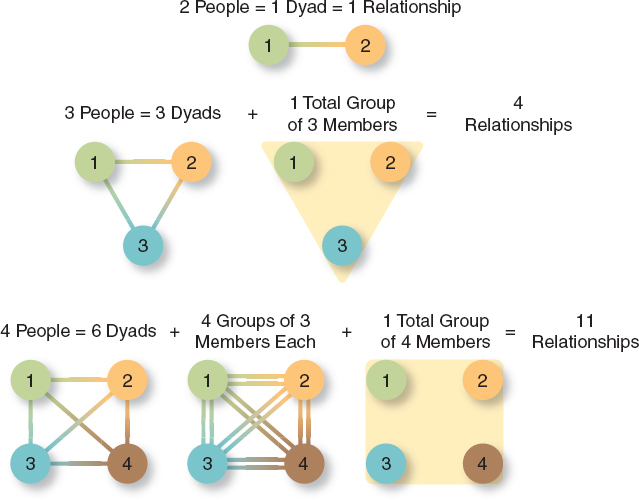Size and Complexity of Groups
As you’ll recall from Chapter 1, dyadic communication refers to interactions between just two people (a dyad). When a third person joins the interaction, the dyad becomes a small group. Scholars generally agree that small group communication involves at least three members (Bormann, 1990), with a maximum of fifteen to twenty-

- Interaction is more formal. Group communication simply cannot work in the same kind of informal way that dyadic communication occurs, due to the need to include more communicators in the discourse. Individuals participating in a group may feel the need to obtain permission to speak, and they may also be reluctant to interrupt a speaker.
- Each member has limited opportunities to contribute. Participants may want or be required by a leader to share “floor time” with other group members. Such time constraints can inhibit the quality and quantity of their contributions. Even without a formal leader, in larger groups a few members tend to dominate much of the talk, while the less assertive members tend to remain quiet.
- The communication becomes less intimate. The greater the number of participants is, the less comfortable participants feel self-
disclosing or voicing controversial opinions. - The interaction consumes more time. As more participants are invited to contribute or debate, and there are more opinions possible, the interaction takes longer to complete.
- Relationships become more complex. As more participants are added, the relationships become more complex. In the dyad, of course, there is only one relationship—
that between person 1 and person 2. But as shown in Figure 9.1, add another person, and you now have four potential relationships— between persons 1 and 2, 1 and 3, 2 and 3, and all three together. The number of relationships multiplies further with each additional participant!
